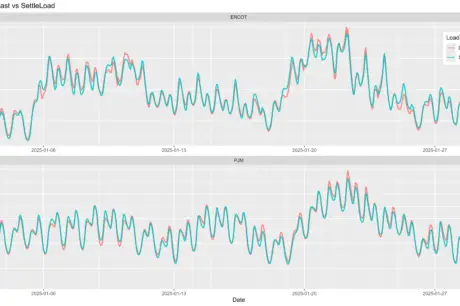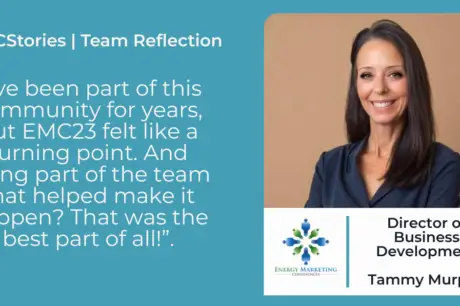This article delves into the data-centric brilliance exemplified by Billy Beane’s tactics with the Oakland A’s, as chronicled in “Moneyball” by Michael Lewis. How can we learn and apply Baseball and Sales Parallels in business?
BASEBALL GM Office:
Baseball Scout: “Well, there’s some work to be done, I’ll admit that. And he’s got an ugly girlfriend.”
GM Billy Beane: “What does that mean?”
Baseball Scout: “An ugly girlfriend means no confidence, OK? I’m just saying, we’re trying to replace Giambi, and this guy’s girlfriend is a 6 at best.”
Baseball and Sales Parallels:
Such were the archaic analytics that once dominated the decision-making process behind multi-million-dollar baseball player investments or acquisitions. With the World Series closing out, I aim to illuminate the parallels between the analytical logic behind baseball player acquisitions up to the early 2000s and our current Energy Sales Climate to determine if there’s a slight human bias in our decisions. (Spoiler: There probably is).
Michael Lewis’s “Moneyball” posed a pivotal question: “If gross miscalculations of a person’s value could occur on a baseball field, before a live audience of 30,000, and a television audience of millions more, what did that say about the measurement of performance in other lines of work?”
Rethinking Valued Metrics: Drawing Parallels from Baseball to Sales
Just as baseball saw an overvaluation of the closer role primarily because of its focus on saves, modern sales environments face similar pitfalls. A concentration on close rates, while seemingly impressive on the surface, might neglect the comprehensive evaluation of a representative’s overall contribution. A striking close rate might overshadow underlying issues like short-lived customer retention or the inability to secure larger deals.
Drawing lessons from “Moneyball”, the Energy Sales domain must recalibrate how it measures performance. By looking beyond, the immediate allure of the close rate, we can genuinely assess the broader contributions of sales representatives.
On-Base Percentage vs. Batting Average
Under Beane’s guidance, the Oakland A’s shifted from the traditional Batting Average to embrace the On-Base Percentage (OBP). They acknowledged that the method by which a player reached base—be it a hit or a walk—was secondary. The primary emphasis was ensuring they did get on base, thereby heightening the potential for runs.
Parallel in Sales: Quality of Leads vs. Quantity
Similar to OBP in baseball, it’s not always about the sheer number of interactions a salesperson has, but the quality of those engagements. It’s not just about how many people a salesperson speaks to, but how qualified those leads are. A salesperson nurturing fewer, high-quality leads might prove more valuable in building relationships that result in increased organic sales. Conversely, a salesperson who pursues many low-quality leads, providing unfavorable experiences, could be a hidden liability.
Player Salary vs. On-Field Value
“Moneyball” emphasized the disparity between a player’s salary and their tangible contribution on the field. When competing against a payroll 3 to 4 times larger, like that of the New York Yankees, you need to play your cards right.
Renowned players commanded hefty salaries, but their on-field performance didn’t always align. Let’s revisit the overvalued closer role, for example. In baseball, the closer’s role was elevated based on the “saves” metric, even if they might only pitch a single inning and not necessarily during the game’s pivotal moments.
Parallel in Sales: Top Sales Performers
While a salesperson might rightfully boast a remarkable close rate, and high energy is essential for team morale, value-for-performance evaluation for top performers may reveal a different story. They might often be converting leads that were already inclined to buy. This can lead to an inflated perception of their value based on their commission structure. True excellence in sales is not just about sealing the easy deals. The mark of an exceptional sales representative is the ability to convert challenging sales at a higher value compared to their peers.
Fielding Metrics: Beyond the Eye Test
Historically, baseball leaned heavily on observational assessments to gauge a player’s defensive skills. While batting had clear statistics to measure performance, defensive abilities often became subject to personal judgments.
The advent of Sabermetrics ushered in a new era. More nuanced, data-driven metrics were introduced to offer a deeper insight into a player’s defensive value on the field. These advanced metrics revolutionized player evaluations. They not only presented a more rounded understanding of a player’s contribution but also ensured that previously underappreciated defensive talents were finally acknowledged due to the availability of quantifiable data.
Parallel in Sales: The Customer Service Metrics
In the realm of sales, while the final handshake or the signed contract might steal the limelight, the post-sales journey is just as critical, if not more so. Enter customer service metrics, the silent guardians that echo the significance of baseball’s fielding metrics.
Historically, metrics like Service Level and Handle Time were revered in the BPO space. But to genuinely appreciate the customer experience, consider these:
- Survey Score: This offers insights into customer satisfaction post-interaction with a sales or support representative. A consistent high survey score suggests a salesperson adept at closing deals and nurturing positive relationships, fostering long-term customer loyalty.
- One Call Resolution (OCR): An essential metric in customer service, OCR reflects a representative’s efficiency and knowledge. A high OCR rate signifies not only prompt problem resolution but also deep product/service understanding and the ability to convey solutions effectively to customers.
- Post-Sales Support and Follow-Up: The quality and frequency of follow-ups post-sale can solidify or jeopardize a business relationship. Metrics encompassing the number of check-ins, the caliber of support provided, and response time to customer inquiries are invaluable.
Regular, meaningful interactions can unlock upselling opportunities and generate referrals, enhancing the overall sales lifecycle.
In a nutshell, while the “offensive” metric of closing a sale is undeniably vital, the “defensive” customer service metrics present a holistic view of a salesperson’s genuine value. They shed light on a representative’s prowess in nurturing client relationships post-sale, ensuring continued business expansion and fostering customer loyalty.
The Road Ahead: Data, Humanity, and the Fine Balance
The wisdom of “Moneyball” extends far beyond baseball, encapsulating the symbiotic relationship between data and intuition. At Capital Shield Home Services, we blend sales expertise with data driven metrics to craft unique BPO solutions. By prioritizing metrics such as Degree of Difficulty Conversion Rates, (OCR) One Call Resolution, and Customer Life Value, we endeavor to eliminate gut-feel decision-making, allowing your enterprise to truly manifest your vision.
Baseball, America’s beloved pastime, underwent a data revolution to refine its player evaluation metrics. I invite you to join me on this exciting journey towards a data-centric Sales Metrics Revolution!
Eddy Rosales is the COO of Capital Shield Home Services












